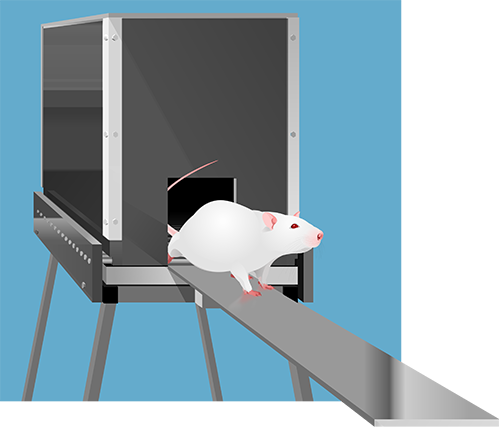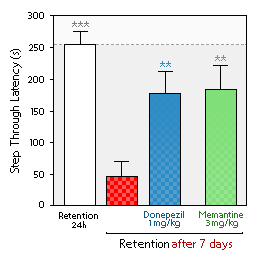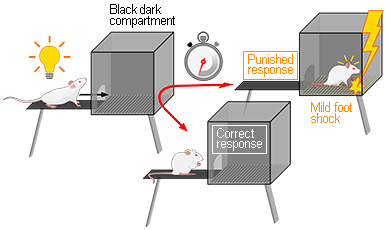Newsletter # 80

Animal models
The Passive Avoidance test is a fear-aggravated test used to evaluate memory in rodent models of CNS disorders.
■ In the rat, NEUROFIT found that the retention and retrieval of this acquired avoidance spontaneously disappears after 1 week. Hence, this natural forgetting behavior is exploited to evaluate and demonstrate the memory enhancing effect of test compounds.
- Passive avoidance test: step through latency

■ Both Donepezil and Memantine - Alzheimer disease medication regimen are found to improve the memory retention 1-week after learning.
■ Retention after 24h indicates an unaltered memory performance as opposed to Retention after 7 days which reflects time-based memory decay.
 Amyloid-beta-induced passive avoidance impairment to mimic the key neuropathological hallmarks of Alzheimer's disease and to evaluate novel therapy, Amyloid-beta-induced passive avoidance impairment to mimic the key neuropathological hallmarks of Alzheimer's disease and to evaluate novel therapy, |
 Scopolamine-induced passive avoidance impairment to evaluate procognitive effect of chemical entities Scopolamine-induced passive avoidance impairment to evaluate procognitive effect of chemical entities
|
Get in touch


 PREVIOUS
PREVIOUS
